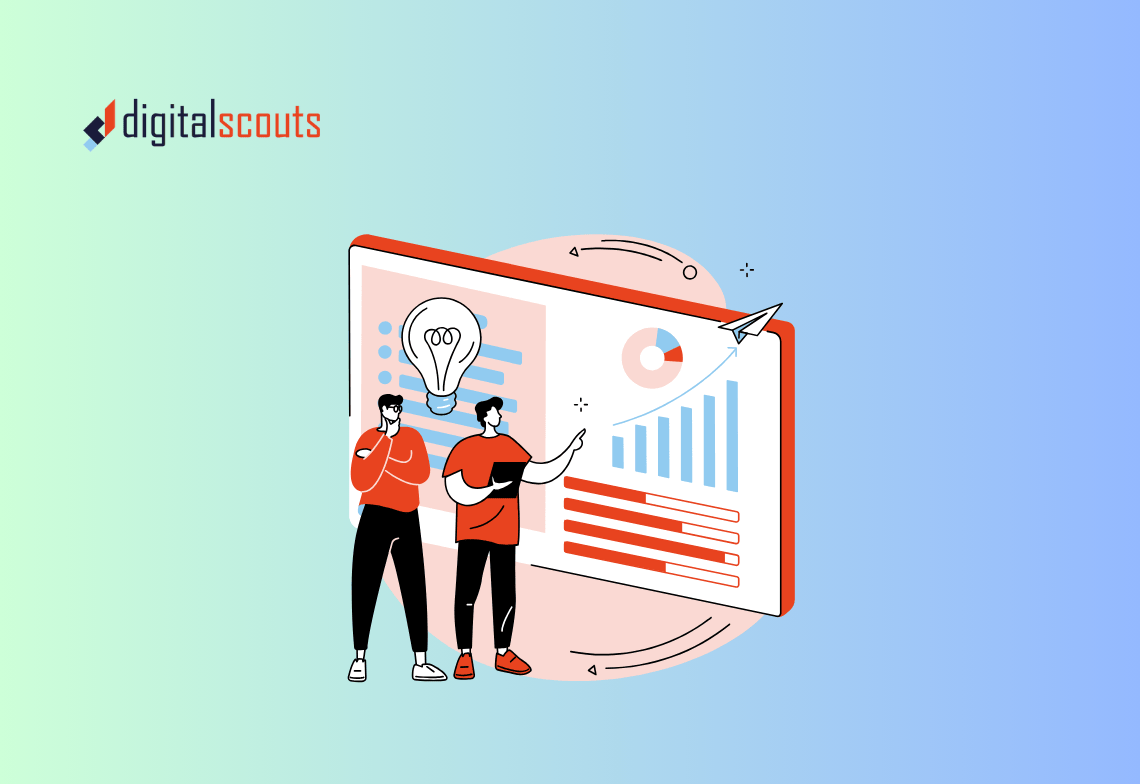AI-powered search is changing how people find information.
Instead of browsing through links, users now ask questions and get direct, summarised answers — often without clicking through to a website. This shift has given rise to Answer Engine Optimisation (AEO), a new discipline that focuses on how content appears and performs in AI-generated responses.
But as AEO grows in importance, many marketers ask the same question: How do we measure success?
Traditional SEO metrics like clicks and impressions do not tell the full story anymore. AEO requires a broader approach — one that measures visibility, authority, and business impact across the entire customer journey.
This guide explains how to track AEO performance step by step, with practical ways to connect your visibility in AI search to real marketing ROI.
Why AEO Measurement Matters
For years, SEO success meant ranking on page one of Google. But with AI-driven tools like ChatGPT, Bing Copilot, and Google’s Search Generative Experience (SGE), users no longer need to visit multiple pages to find what they want.
Your content now competes for space within AI-generated answers.
That means measuring success requires more than keyword ranking. It requires tracking how often your brand appears in AI summaries, how authoritative your content looks to algorithms, and how much traffic or engagement that visibility generates.
For RevOps leaders, AEO metrics go beyond marketing performance. They indicate how effectively your business builds awareness, credibility, and demand in an AI-first search environment.
Step 1: Understand the New AEO Metrics Landscape
AI search engines pull information differently than traditional ones. They prioritise clarity, structure, and authority over keyword density.
This means AEO measurement includes new dimensions that traditional analytics tools may not capture yet.
The three pillars of AEO performance
-
Visibility: How often your brand or content is cited, linked, or referenced by AI systems and answer engines.
-
Authority: How algorithms evaluate your content’s accuracy, depth, and trustworthiness.
-
ROI: How visibility in AI-driven search translates into engagement, leads, or pipeline impact.
Each of these pillars connects back to how your content is written, structured, and distributed.
Step 2: Measure AEO Visibility
Visibility is the foundation of AEO performance.
In traditional SEO, you track impressions and rankings. In AEO, you track citations — how often an AI model references your content in generated answers.
How to track AEO visibility
-
AI search monitoring tools: Use platforms like Authoritas or Nozzle to monitor when your content is mentioned in AI summaries.
-
SERP snapshot tools: Capture how AI-powered results display your content for target queries.
-
Manual testing: Regularly run your priority questions in ChatGPT, Bing Copilot, and Google SGE to see if your site appears in the results.
What to measure
-
Number of AI-generated answers referencing your brand
-
Frequency of content mentions per topic cluster
-
Position and prominence of your brand within AI summaries
Even if clicks are lower than traditional search, consistent visibility builds brand recall and authority over time.
Step 3: Evaluate Content Authority
AI models reward expertise. To appear in generated answers, your content must signal authority through structure, language, and relevance.
Authority metrics to monitor
-
Topical coverage: How comprehensively your content covers key themes or questions in your niche.
-
Source credibility: Backlinks from reputable sites and brand mentions across trusted domains.
-
Content structure: Use of clear headings, concise definitions, and question-answer formats that help AI systems interpret your information.
-
Engagement signals: Metrics such as dwell time, scroll depth, and returning visitors that show real users value your content.
Practical tip
Run a content audit focusing on clarity and intent. Replace jargon with natural language, simplify formatting, and include direct answers to common questions.
Step 4: Track Engagement Beyond Clicks
AEO performance cannot rely solely on traditional traffic metrics. AI-driven visibility may reduce clicks but still generate awareness and brand influence.
How to measure engagement differently
-
Branded search growth: Track increases in searches for your company or product name.
-
Assisted conversions: Measure how many leads or deals originated from users who previously interacted with top-of-funnel AEO content.
-
Time on page and scroll rate: These indicate how engaging your answers are for human visitors.
-
Referral traffic from AI engines: Some platforms, like Bing Copilot, include clickable links within AI summaries. Monitor referral analytics for these sources.
Example
If your brand appears frequently in AI-generated answers but sees stable website traffic, it means awareness is expanding even if users stay within the AI interface. That exposure has measurable long-term brand value.
Step 5: Attribute AEO Performance to Revenue
The ultimate goal of AEO is not just visibility but revenue impact.
Connecting AEO metrics to pipeline growth helps marketing, sales, and operations teams see its true value within the RevOps model.
How to connect AEO performance to revenue
-
Define attribution models: Assign influence credit to AI-driven visibility when leads or opportunities originate from queries where your brand was cited.
-
Tag AEO optimised pages: Track conversions or form submissions from pages built for AI visibility.
-
Compare engagement across content types: Evaluate whether AEO-structured content converts better than traditional SEO articles.
-
Review assisted deal paths: Use CRM tracking to identify if contacts who became customers first engaged with AEO content.
When you can show that AEO exposure leads to inbound interest or improved conversion rates, you prove its ROI beyond awareness.
Step 6: Combine Traditional SEO and AEO Metrics
AEO does not replace SEO. It extends it.
Many of the same fundamentals — high-quality content, technical performance, and structured data — still drive success. The difference is in how those efforts are measured.
Combine metrics for a complete view
| Metric Type | What It Measures | Why It Matters |
|---|---|---|
| SEO Metrics | Rankings, organic traffic, click-through rate | Measures search discoverability and traffic volume |
| AEO Metrics | AI visibility, answer mentions, brand authority | Measures influence in AI-driven search results |
| Revenue Metrics | Conversion rate, pipeline contribution, ROI | Measures business impact of both SEO and AEO |
This holistic approach connects marketing performance to measurable business outcomes across all search formats.
Step 7: Use AEO Insights to Improve Content Strategy
The best part of measuring AEO success is that it provides feedback loops for content improvement.
How to use AEO data to refine content
-
Identify which question formats or topics generate the most AI mentions.
-
Update older articles with clearer definitions or FAQs.
-
Expand on high-performing pages with related topics or internal links.
-
Optimise structured data to help AI interpret your context correctly.
Each small improvement strengthens your visibility across both AI and traditional search, compounding your authority over time.
Step 8: Benchmark AEO Performance Over Time
Because AEO is still new, benchmarking is critical.
How to create benchmarks
-
Start with visibility tracking: Record how many AI mentions your brand receives per quarter.
-
Set authority baselines: Use domain rating, backlink count, and topical coverage as benchmarks.
-
Establish ROI goals: Define what percentage of inbound pipeline should be influenced by AI-driven visibility within six to twelve months.
Once benchmarks are in place, you can evaluate trends and set realistic targets for growth.
Example
A B2B software company tracks quarterly visibility across AI search tools. Within six months, its content appears in 20 percent of relevant AI answers, leading to a measurable increase in branded search volume and inbound demo requests.
Benchmarking turns AEO from an experiment into a strategic performance channel.
Step 9: Create Reporting Dashboards
To manage AEO effectively, you need unified reporting that combines visibility, engagement, and ROI data.
Key elements of an AEO dashboard
-
AI search visibility metrics (citations and answer inclusions)
-
Traditional SEO traffic and ranking data
-
Engagement and conversion performance by page
-
CRM-linked revenue attribution
Platforms like HubSpot, Looker Studio, or Databox can visualise this data in real time.
Common AEO Measurement Mistakes
-
Focusing only on clicks: AI visibility often delivers value before a visit happens.
-
Ignoring attribution: Without linking AEO exposure to pipeline, ROI stays invisible.
-
Using outdated metrics: Traditional keyword ranking alone cannot track AI-driven exposure.
-
Neglecting content updates: AI models rely on freshness and relevance; stale content quickly loses visibility.
Avoiding these pitfalls ensures your AEO reporting stays accurate and actionable.
Bringing It All Together
Answer Engine Optimisation represents the next evolution of search visibility. Measuring it correctly is what separates strategy from guesswork.
When you track visibility, authority, and ROI together, you see the complete picture — from how often your brand appears in AI search results to how that awareness translates into engagement and revenue.
For marketing, operations, and sales leaders, AEO measurement is not just about content performance. It is about building a predictable growth engine in an AI-driven world.
Digitalscouts helps B2B companies design, implement, and measure AEO strategies that connect visibility with outcomes. Our RevOps approach ensures that every optimisation contributes directly to pipeline growth.
If you want to understand how your content performs in AI search and how to turn that visibility into measurable ROI, our experts can help you set up the right AEO measurement framework.
Frequently Asked Questions
Use AI search monitoring tools, analytics dashboards, and CRM attribution to connect visibility with business outcomes.
About Author
Ashish is a B2B growth strategist who helps scaleups align marketing and sales through Account-Based Marketing (ABM), RevOps, and automation. At DigitalScouts, he builds scalable content engines, streamlines lead flows with HubSpot, and runs targeted GTM programs to drive predictable pipeline. He regularly shares insights on using AI and automation to power ABM and accelerate complex buyer journeys.








